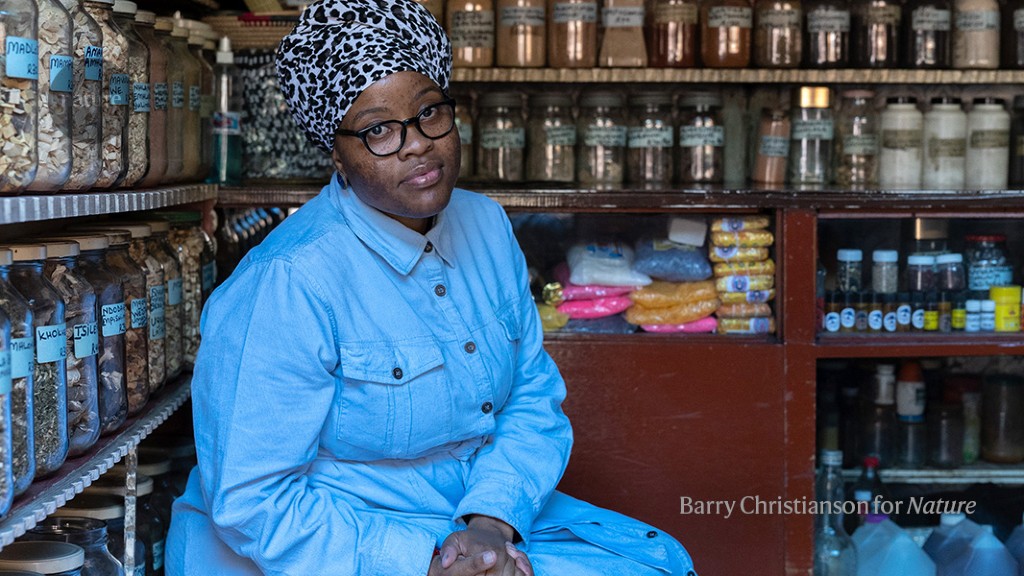
I’m an ethno-ecologist studying the cultural value and sustainability of wildlife use by traders and traditional healers in South Africa. I am also a traditional healer myself.
In southern Africa, traditional healers use plant and animal materials, known as umuthi, that might come from endangered species such as lions and pangolins. This can create tension between umuthi traders and conservation professionals.
I think a lot about the balance to be struck between cultural identity, healing traditions and the urgent need for wildlife preservation. I meet with traditional healers and umuthi traders in markets like the one pictured, which is in Johannesburg. Behind me, dried umuthi lines the walls in glass jars and my hands are arranged to form one of the greetings of a traditional healer.
Being a healer as well as a PhD candidate at the University of Cape Town brings me unique insights. Often, conservation objectives clash with deeply rooted cultural practices. I try to bridge those two realms and build trust between healers, tribal authorities, traders and conservationists — a challenging endeavour in the light of historically exploitative research practices.
Initiatives that bring these groups together, such as ones that promote home-grown medicinal plants, have had promising outcomes. I talk to communities about our conservation laws and how they could be changed to allow sustainable harvesting of natural products. I want to empower communities to become stewards of their environment. After all, if plants and animals go extinct, then that threatens the livelihoods of traders and healers alike.
My dual role as a healer and researcher creates its own complexities. Yet, I remain optimistic that harmonious coexistence is attainable. My purpose is to amplify the voices of traditional healers, respect their wisdom, and preserve the delicate equilibrium between culture and conservation for generations to come.
